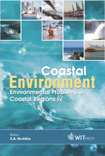Application Of New Generation Models Over Complex Coastal Areas
Price
Free (open access)
Transaction
Volume
58
Pages
Published
2002
Size
571 kb
Paper DOI
10.2495/CENV020361
Copyright
WIT Press
Author(s)
G Latini, R Cocci Grifoni & G Passerini
Abstract
Air quality dispersion models of new generation are becoming widely used for regulatory air quality modelling. An important feature of these models is the use of boundary layer and surface energy flux parameterizations to provide turbulence parameters for estimating diffusion rates. These models are, in fact, based on the principles of the ‘new generation’ meteorology, which employs continuous variables to characterise atmospheric conditions, rather than a fixed number of categories used by traditional Gaussian models. In this paper a new generation model, namely AERMOD, was applied over a complex coastal area that comprises valleys, hills, urban zones, and an industrial zone. 1 Introduction AERMOD is a steady-state plume dispersion model for the assessment of pollutant concentrations from point, volume, and area sources. Sources may be located in rural or urban areas, and receptors may be located in simple or complex terrain. Complex terrain is defined as terrain in which ground elevations are above the stack tip or release height and the complex terrain capabilities of AERMOD are of particular interest. The AERMOD modelling system consists of two pre-processors and the dispersion model. AERMET (EPA, [1]) is the meteorological preprocessor and AERMAP (EPA, [2]) is the terrain preprocessor that characterizes the terrain, generates receptor grids and facilitates the generation of hill height scales. Meteorological data processing can be an extensive process if the surface and upper air data are not in one of the expected formats, and terrain processing is limited to areas in which USGS DEMs data are available. The sensitivity
Keywords





